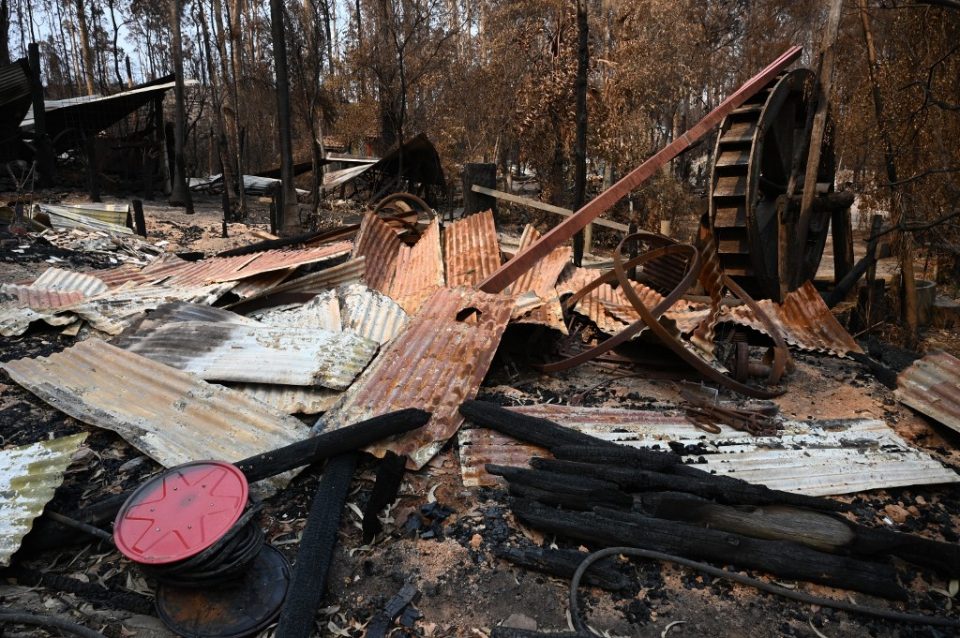
by Andrew BEATTY
Agence France-Presse
SYDNEY, Australia (AFP) — Exhausted firefighters said they had finally brought Australia’s largest “megablaze” under control Monday, as wet weather promised to deliver much-needed respite for countryside ravaged by bushfires.
New South Wales firefighters said they finally had the upper hand in the fight against the vast Gospers Mountain fire on Sydney’s northwestern outskirts, which has been burning out of control for almost three months.
Visiting the area on Monday, New South Wales Rural Fire Service commissioner Shane Fitzsimmons said there was a “small area of burning still to complete” but the “containment prognosis looks promising.”
The fire seared an area of national park three times the size of Greater London and lit several connected blazes totaling over 800,000 hectares — an area larger than Austria.
As residents and authorities continued to come to grips with the sheer scale of the devastation, the Bureau of Meteorology forecast some fire grounds could get up to 50 millimeters (two inches) of rain in the next week, a relief after a prolonged drought.
If that forecast bears out, the New South Wales Rural Fire Service said, “then this will be all of our Christmas, birthday, engagement, anniversary, wedding and graduation presents rolled into one. Fingers crossed.”
Dozens of other fires are yet to be controlled.
– Alice Cooper –
The climate-change-fueled fires have prompted an international outpouring and donations from around the world to help communities and animal populations.
Australia’s unique flora and fauna has taken a catastrophic hit, with an estimated one billion animals killed, and countless trees and shrubs burned away.
The country’s environment minister Sussan Ley has warned that in some areas, koalas may have to be reclassified as endangered.
This weekend, Sydney will host a star-studded charity gig to benefit fire services, the Red Cross and animal welfare organizations.
Headliners include Alice Cooper, Olivia Newton-John and Queen.
Bushfire backlash
The political impact of the crisis is also coming into sharper relief.
A poll released Monday showed Prime Minister Scott Morrison’s approval ratings have nosedived in the face of widespread anger over his handling of the deadly crisis.
The News poll survey showed 59 percent of Australian voters are dissatisfied with the conservative leader’s performance overall, and only 37 percent were satisfied, an abrupt reversal since his shock election win last May.
Morrison has been criticized heavily for his response to the months-long crisis — which included going on holiday to Hawaii, making a series of gaffes and misleading statements about his government’s actions, and forcing angry victims to shake his hand.
Morrison began the crisis insisting local authorities had enough resources to handle the fires and exhausted volunteers firefighters “want to be there”.
He also repeatedly stated that Australia was doing more than enough to meet its emission reduction targets, prompting a series of large-scale street protests.
Seeing a backlash, Morrison has since deployed the military, launched the largest peacetime call up of reserves, pledged billions of dollars in aid, increased payments to firefighters, and suggested more work may need to be done on emissions.
© Agence France-Presse








